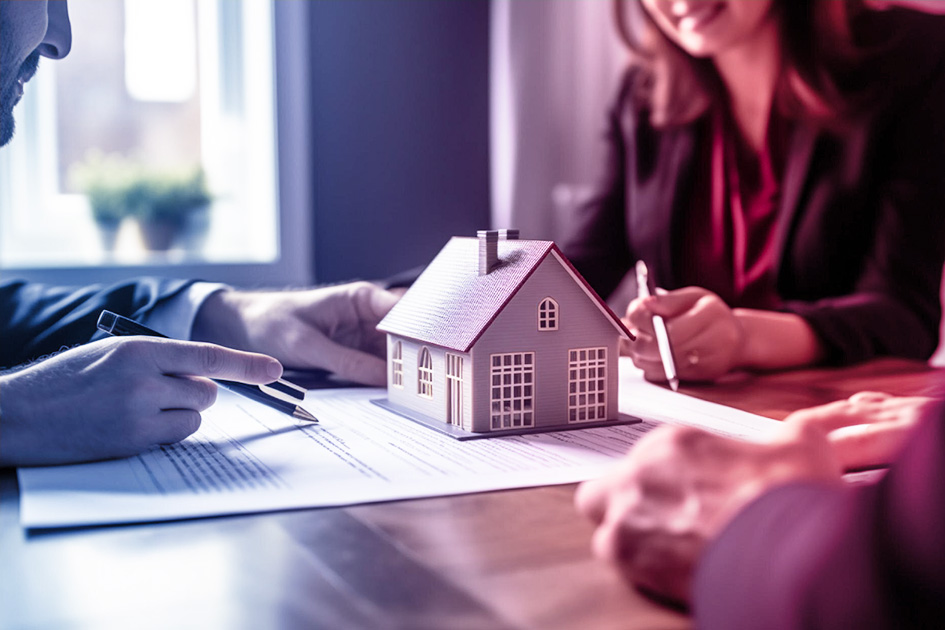AI has already dramatically changed how we work, live and interact with others. It will also have a considerable impact on the UK’s property sector. Most of the AI applications in use today are focused on how end customers interact with properties, do searches, visualise floorplans or simply to get more information on a neighbourhood. In this article we will instead look at some current applications of AI from a property business & commercial perspective.
1) Laiout
An intuitive and simple tool which enables the very fast and easy design of an office floor plan. Users input their CAD plans, define how many desks are needed and, in seconds, can generate thousands of possible iterations of the floor plan. Users can click-to-freeze the elements they like and regenerate the rest. The tool comes with lots of additional functionalities to evolve and define the floorplan. Once a floor plan seems like it might be appropriate, a 3D model can be generated to fly-through and get a sense of the space. The creators are exploring the use of GenAI tech to render the backgrounds and design elements of the 3D plans to enable users to further customise their office look. The use cases for this are plentiful, from occupiers who want to explore what different offices might look like, to office managers who want to redesign their offices to landlords, contractors and agents. This tool does not yet do technical drawings but will get to 80% of the answer and save users enormous time.
2) Artefact’s Site Mix Optimiser
Built for nationwide house builders to quickly and accurately define what an optimal site mix might look like. Instead of spending up to 6 weeks understanding a local market, speaking to agents and trying to design a house type mix that might work (but will likely need to evolve during construction), AI can optimise the process and support a land purchasing decision within a couple of hours. The tool uses hundreds of millions of data points garnered from historical sales and contextual data to build correlations between the sale of a property in a particular postcode with hundreds of variables at the time. This allows the tool to go through billions of possible combinations for any given site and optimise the mix to 1) maximise revenue or 2) maximise rate of sale or 3) maximise architectural diversity in order to achieve better placemaking. This tool has recently generated a house builder an average of £1m extra revenue per site, massively simplified internal processes and sped up decision making on land purchases.
3) Vantage UAV for Responsive Repairs
Increasingly used in social housing to replace manual and costly inspections of an asset’s fabric including the roof. Vantage can send out commercial drones on a predefined flight path to 3D map a building, take monthly high resolution images of the entire facade and roof within minutes and have an AI compare the latest survey images with the ones taken on previous flights to identify changes in the building’s fabric. When cracks, water damage or similar defects are identified, they are sent to a human to review and take action. This can save millions a year in surveys from cash strapped housing associations and help identify issues before they become too expensive to fix. Resident privacy is insured through informing them in advance of the drone flights and automatically blurring windows.
4) Artefact’s Dynamic Lease Pricing Tool
For large build-to-rent operators, managing pricing at an unit level is complex and depends on a vast number of variables, a problem which AI is uniquely positioned to solve. A reinforcement learning (RL) engine learns from the behaviour of existing tenants, the state of the market, liquidity within the building and automatically suggests lease terms to new tenants and renewal terms to existing ones. The algorithm is designed to maintain a certain level of revenue and void across the building but also understand the differences in size, configuration, floors and views of each unit and so prices accordingly. The RL engine learns from past tenant behaviours in accepting or rejecting pricing terms and creates dynamic clusters to predict how similar existing tenants are likely to behave in the future. Whenever a tenant refuses a renewal pricing, the tool will automatically generate a new pricing proposal based on all factors or decide to retain the offer as-is. This powerful engine can remove a significant headache from leasing managers while optimising pricing strategies.
A major challenge for operators of large residential portfolios is optimising the mix of repairs/maintenance and planned works investment. Get this right and your CapEx investment is highly targeted and reduces your Opex costs. Get this wrong and your repairs budget expands to deal with today’s issue, reducing your ability to invest in planned works. Too many housing providers have planned programmes driven by asset replacement times without being able to consider the impact on repairs. There are already some excellent data analytics solutions in the market and some of these are being supercharged by AI. A tool can examine the asset register, match it repairs bills and frequency to predict which assets are likely to fail and when, which assets are most durable and match it with planned or regulatory repairs. The AI elements can also come into play to predict where mould is likely to exist, which properties are likely in need of repair and where flood damage might have occurred. These repairs can be automatically scheduled to optimise the team’s time and arranged with very little human intervention. Total Mobile also offers some software solutions in that space.
6) Conveyancing AI
It takes an average of 21.5 weeks (according to Right Move) to carry out searches and conveyancing. This includes many manual, burdensome and repetitive tasks which can be easily automated. The system of searches is antiquated, repetitive, time consuming and costly for any prospective buyer. There are a number of players in the market and the list is growing rapidly. Avail’s AI is automating title due diligence for conveyancing solicitors. Luminance processes all the legal real estate transaction documentation using AI. Conveyo is using AI to collate property information into a home information pack for listing purposes. It is only a question of time until these start to be combined so that the vast majority of the conveyancing lifecycle can be automated and provide insights driven by AI. This will never completely remove the need for a solicitor in the loop (for liability and human experience reasons) but will dramatically shorten the time frame and reduce costs.
7) Artefact’s Site Success Prediction Tool
A machine learning tool which is trained on a developers historical relative site performance to examine which site attributes have a stronger incidence on the long term success for different types of assets (which can be defined in terms of rate of sales, margin contribution and IRR). This can then be applied across all postcodes in the UK. This tool allows a developer to chart key metrics to a heatmap to define where and what to build next. This becomes a powerful land banking prioritisation tool which saves months of work, enormous uncertainty and drives operational efficiencies, overall resulting in a greater chance of commercial success.
8) Visuado
Enables 3D visualisations and renderings to be automatically created for off plan designs. Enabling designers to move seamlessly through a 3D space, define each individual unit, see the outside views and the building in-situ of its environment. Essentially it automates the enormously costly rendering and design phases of a project. This also generates great renderings and 3D walkthroughs for marketing off-plan properties to prospective buyers, allowing them to get a much more real sense of the space, see the actual view they will have from their windows and project themselves in the future property. The tool also includes nifty visualisations of how the shadows and sun move throughout the day across the building for any day of the year.
Coinciding with the launch of the advanced spatial tech in Apple VisionPro and the growth in VR technology. It enables immersive walk-throughs of property viewings through the VR headset, reducing the need for in-person visits. It is by far the most immersive way to explore homes for sale as everything is “life sized” and reflects what users would actually see from floor to ceiling in every room. This includes opening up closets, closing doors, looking out of windows etc.. . Where Zillow has made even greater strides is in its AI-powered interactive floor plans which enables a relatively seamless walk-through the house. This is clearly where the future of residential agencies will evolve.
10) Hometrack
One of many Automated Valuation Models (AVM) (this one owned by Zoopla) which are increasingly carrying out accurate residential property valuations that take into account thousands of hyper-local and macro variables to arrive at a more precise and nuanced valuation, primarily aimed at mortgage lenders. Fast, very cheap, within about 5% accuracy (assuming the asset is reasonably ‘standard’) and increasingly accepted by lenders. These tools will struggle more with retail and commercial property but will force valuers to prove their worth and provide real contextual insights. Valorem is the JLL equivalent AVM aimed at professionals which also includes property and portfolio data. Homer is a standard AVM but interestingly also takes into account user uploaded photos of the interior of the home to incorporate interior conditions and furnishings in the valuation, something no other AVM has done previously.
Honourable Mention – Vu.City
An amazing tool to visualise the 3D massing of a building across UK cities, see how it impacts sight lines, view sunlights and shadows, rights to light and massing against nearby buildings. Enables much faster and easier testing of different massing proposals to support planning applications and create a visual picture of the building within the urban fabric. Fast and easy to use with a myriad of applications and features.
Artefact is a global data services company that sits at the intersection of consulting, data science, AI technologies and marketing. Our 1,600+ people break Business and Tech silos and transform organisations into consumer-centric leaders using digital, data and AI. Artefact offers a broad range of services – from strategy to operations with the deployment of AI solutions per industry sectors – that help companies capture the competitive edge of data and AI transformation. We have an industry leading property team made up of property experts, AI specialists and change management experts.

 BLOG
BLOG






